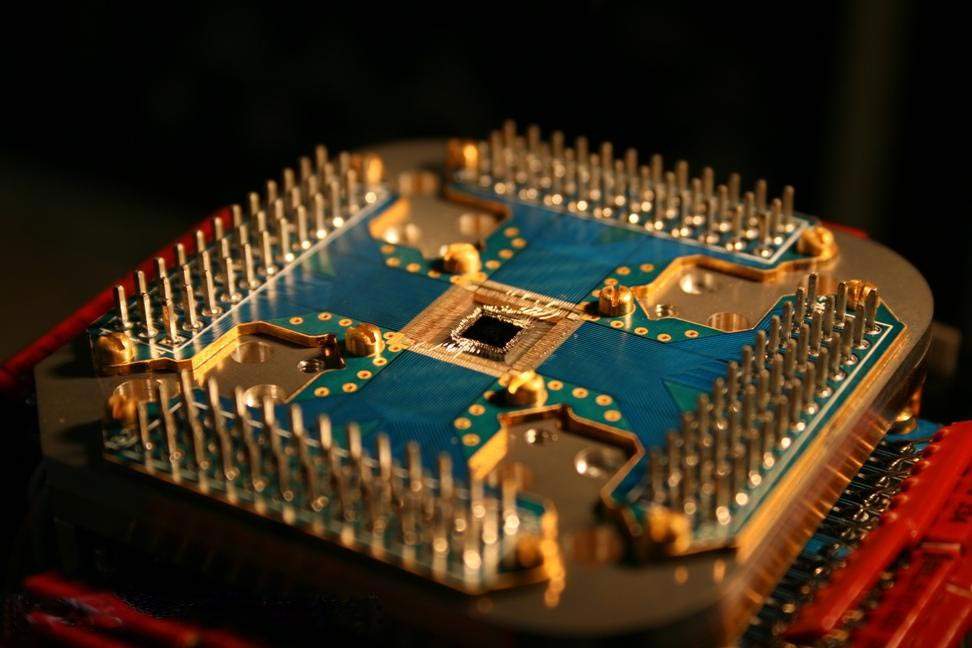Quantum Computing Makes Computers Collaborate Like "Telepathy"
In science fiction movies, we often see people from different locations transmitting information through telepathy, as if their thoughts and actions can instantly communicate with no barriers. Today, scientists are bringing this seemingly magical ability into reality. Recently, researchers at the University of Oxford achieved an astonishing breakthrough: they enabled two distant quantum computers to transmit information like "telepathy" using a technology called "quantum teleportation."

Quantum computers are like superheroes in the world of future technology, capable of solving enormous problems that traditional computers can barely handle in the blink of an eye. If a smartphone were to perform a super complex mathematical calculation, it could take several hours or even days to complete. But a quantum computer? It might finish the task in just seconds, as fast as a lightning bolt. But just like the heroes in movies who always face challenges, quantum computers also have their "minds." If you wanted a superhero to save the world in multiple cities at the same time, you wouldn't want him running around with heavy gear, instead, you'd hope he could be in multiple places at once using some kind of "superpower." Multiple quantum processors, like "heroes," can be connected to work together. Each quantum processor is like a very delicate tool, so small that you can barely see it, and so fragile that even the slightest disturbance could cause it to fall into "chaos." Imagine you've placed a very precise glass sculpture in your house, and you accidentally touch it- suddenly, it shatters into countless pieces, irreparable. Therefore, scientists not only need to solve how to connect them, but also face the challenge that these "glass sculptures" cannot endure integration.

Even more challenging is the fact that as the number of quantu compunus increases, the overall size of the computer also grows larger. It's like trying to build a gigantic Lego castle what initially seems simple becomes more complex as you add more modules, and the castle's size rapidly expands, making it harder to operate. But now, scientists have truly made a breakthrough in this field. Through a technology called "quantum teleportation," quantum computers can work synchronously and share information with each other even when they are thousands of miles apart. It's like superheroes using an invisible energy beam to "teleport" themselves to each other's side without moving an inch. It's as if two people communicate through a special method, able to share each other's thoughts and information, even if they are separated by thousands of miles.
Quantum computing is like a universal key for scientists, unlocking treasure troves that were previously out of reach. In the field of drug development, it acts like a super-smart "magical alchemist," quickly finding the right formulas within the maze of molecules and chemical reactions. Traditional drug development is like searching for a shining gem in a dark cave, requiring countless trials and data analysis, every step uncertain, and taking a long time. Quantum computers, however, are like a magical lamp, allowing you to instantly see all the hidden gems deep within the cave and guiding you accurately to find the most valuable one. For instance, when developing cancer drugs, the traditional method requires thousands of trials, where scientists must test every chemical molecule's reaction with cancer cells one by one.
Quantum computers, on the other hand, can simulate the interactions between molecules and how they react. It's like being in a massive maze, and the quantum computer is the "wise one" who can see the entire layout, giving you the most accurate directions when you're confused, helping you avoid dangerous dead ends, and guiding you straight to the exit.

You can think of quantum computing as an energy-filled "magic accelerator," which could even push the birth of superintelligence. It's like giving a regular sports car a supercharged engine; it doesn't just drive fast but can also handle more complex roads and challenges.
(Writer:Cily)




